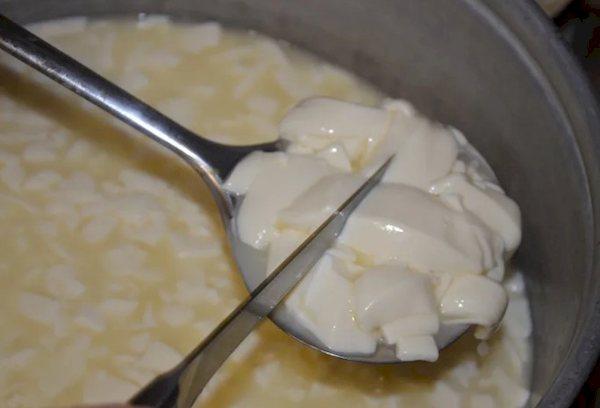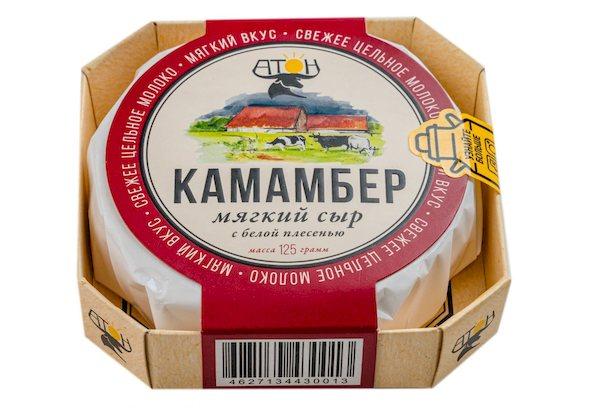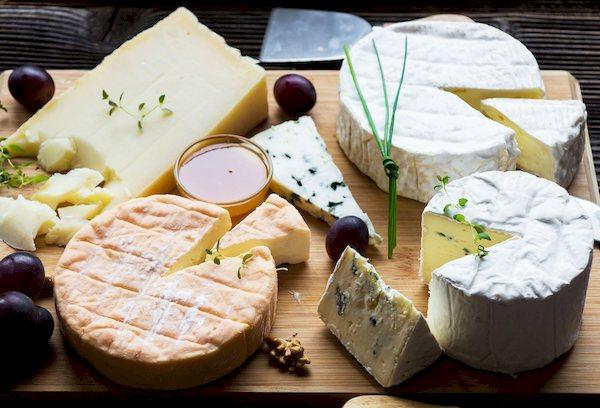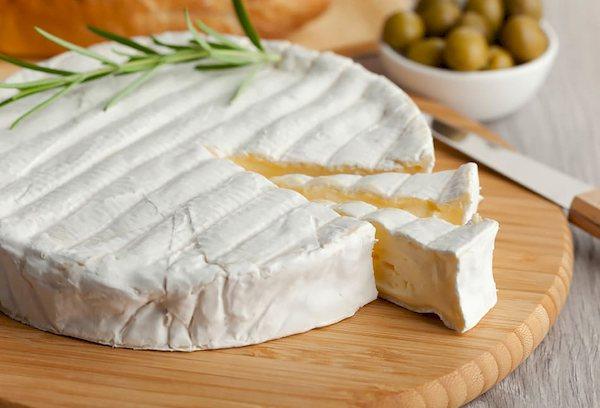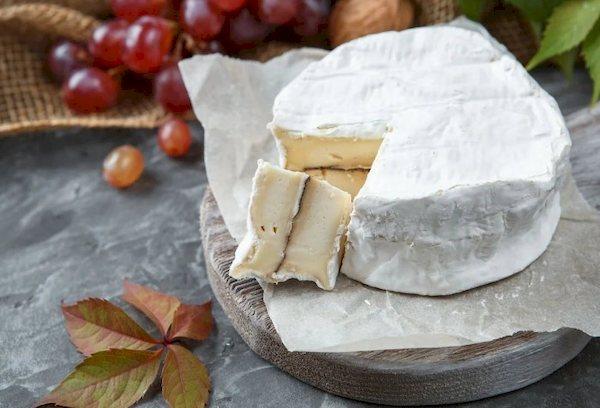What is the difference between Brie and Camembert and how are they similar?
Content:
Blue cheeses appeared on the Russian market several decades ago, and during this time they acquired a certain circle of fans. But, despite their widespread use, not every consumer knows the difference between brie and camembert cheese, although these are the types that have gained the most popularity. They are really very similar - both have a soft texture and are covered with a light moldy crust. But there is a difference, and it lies in many factors, ranging from composition to characteristics of use.
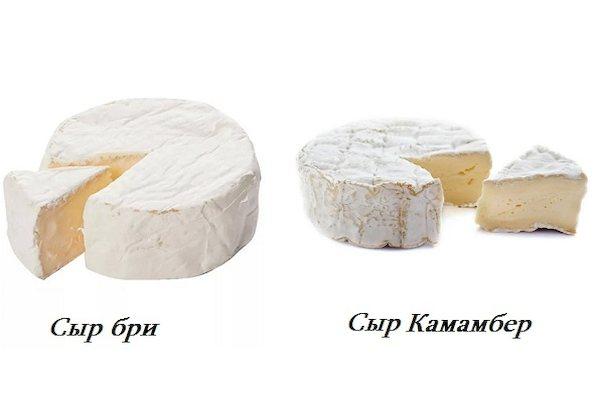
How to distinguish Brie from Camembert
Both types of cheese are soft varieties and are made from cow's milk. Externally, Brie also differs slightly from Camembert; these are small round heads, with white mold on the outside and a delicate, slightly viscous substance inside. The taste is similar – rich, with a slight spice.
But there are more criteria indicating the difference between these types of product.
Cooking time
Brie is considered a “universal” cheese not only because it is suitable for both the festive table and everyday meals. But also because it is prepared at any time of the year.
The production of Camembert in hot months is impractical due to a number of technology features.Therefore, it is not made in the summer, but only from September to May.
Composition and ripening time
Both varieties include starter, enzymes, Penicillium commune fungus, and salt. But in addition to milk, cream is also added to brie. Due to this, the milk fat content in this product is about 60%, while in Camembert it is no more than 45%.
Brie is aged for 1-2 months. Camembert has a shorter ripening period, and the young cheese is ready in just 3 weeks. And the highest quality varieties require about 35 days.
Size and packaging
The head of the brie is oval and slightly raised. Its diameter ranges from 30 to 60 cm, thickness varies between 3-5 cm. It goes on sale both whole and in portions.
Camembert is presented in the form of a rounded flat head with a diameter of 11-12 cm and a thickness of 3-3.5 cm. It is sold only whole, packaged in foil or a box.
Color, smell and texture
The core of Brie is pale, with a grayish tint. The mold crust has a slight ammonia smell, but is edible. The cheese inside is soft and has a delicate aroma.
Camembert, unlike its “brother,” has a pleasant yellowish color. The aroma is unique - the head gives off mushrooms, hay, and, according to some gourmets, “smells a little like a barnyard.” The texture is denser than brie, but a slight “stringiness” is acceptable. If the middle is hard and there is a semi-liquid mass near the crust, this indicates poor quality of the product.
It is worth noting that the color of both types of cheese may vary depending on age. So, the older the brie or camembert, the darker it is.
Taste
Young brie has a soft, delicate and creamy taste. Over time, it becomes sharper. When choosing, you need to focus on the thickness of the head - the thinner the “cake”, the sharper the cheese.
Camembert has a slightly sharper, moderately spicy taste with noticeable mushroom notes. May be a little sweet.
Features of use
Brie is considered a versatile cheese. It goes well with baguettes, crackers, croissants and other types of baked goods. Can be served with apples, pears and sweet berries. Suitable for dessert wines, cider and champagne. And the French love to put it in coffee instead of cream.
Camembert is a more specific product, good as an independent dish. Pairs with nuts, crackers, grapes and sour fruit jam. You can serve it with dessert wines, cider or Calvados.
Nutritional value and restrictions
Due to the cream content, brie has a higher fat content. Camembert contains less lactose and can be consumed in limited quantities by people who are allergic to milk.
The restrictions for both varieties are the same. Blue cheeses should not be given to small children, as they contain unpasteurized milk. And people with hypertension and high cholesterol are not recommended to consume more than 50 g of product per day.
Bree
This is one of the most ancient French cheeses. In his homeland, he gained popularity during the Middle Ages. And the product received its name from the province near Paris, since it was there that it was first manufactured.
Brie cheese was considered the food of kings. Philip Augustus, Henry IV and Queen Margot were delighted with him. And Charles d'Orléans gave the court ladies a head of brie for Christmas, and they eagerly awaited the present.
Today, brie is known throughout the world. Now it is not one species, but a “family”, since many varieties have appeared. This is double and triple brie, cheese with the addition of herbs, nuts, and dried fruits.There is also a line that includes samples without cow's milk in the composition.
Camembert
An unusual legend is associated with the appearance of Camembert cheese. According to legend, during the French Revolution, the Norman peasant woman Marie Harel saved a monk hiding from persecution. And in gratitude, he revealed to her the secret of making cheese, until then known only to him.
Indirect confirmation of this story comes from archival documents discovered at the beginning of the last century by the mayor of the small town of Vimoutier. They mention a certain Marie Harel from the village of Camembert, who has been selling unusual cheese since 1791. And in 1928, a memorial monument was erected in the homeland of the girl (and, accordingly, cheese).
But Camembert acquired a look close to today’s only towards the end of the 19th century. And it became popular all over the world during the First World War. In those years, cantal and Gruyère were purchased for the needs of the army, but this was not enough for the huge number of soldiers and officers. And then France began to supply Camembert to the troops in large quantities.
Unlike brie, this type of cheese does not have many variations. The recipe according to which it was prepared 100 years ago has remained virtually unchanged. Sometimes a variety with truffles is found on sale.
In addition to the similarities in appearance and taste, brie and camembert are equally demanding in terms of storage conditions. Blue cheeses should be kept refrigerated, at a constant temperature of about +2°C. And before cutting and eating, the piece should lie at room temperature for about half an hour. It is believed that this is how the cheese will reveal all its taste.
